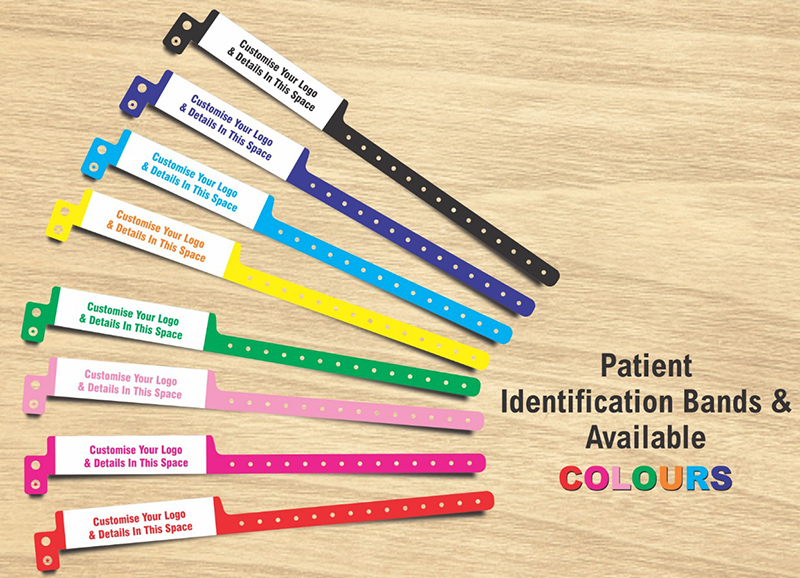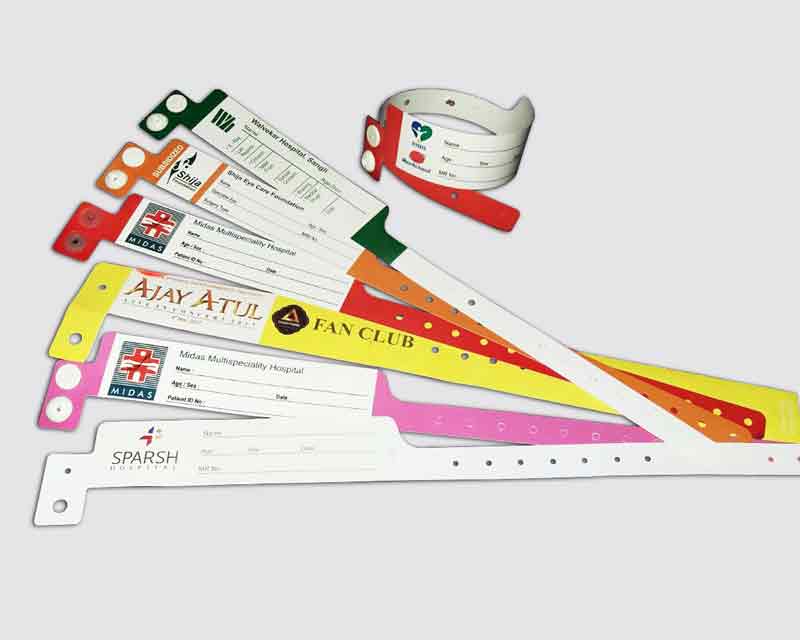How to Choose the Right Patient ID Band for Your Healthcare Facility
How to Choose the Right Patient ID Band for Your Healthcare Facility
Blog Article
Exploring the Various Sorts Of Patient Identification Band Made Use Of in Medical Facilities
In the intricate world of health care, the crucial duty of Patient Identification bands typically goes unnoticed. These bands, varying from simple paper wristbands to sophisticated RFID bands, form the foundation of Patient safety procedures, guaranteeing precision in Patient Identification.
Comprehending the Relevance of Patient Identification Bands
While they might appear like mere accessories, Patient Identification bands play a vital role in medical centers. These bands serve as a crucial device for verifying Patient identity, protecting against clinical errors connected to misidentification. Patient Identification bands additionally help in simplifying management tasks, guaranteeing accurate record-keeping and payment.
Conventional Paper Wristbands: Their Use and Limitations
Typical paper wristbands have actually been a staple in Patient Identification across different medical centers. While their use prevails, they harbor particular limitations that might affect their efficiency in Patient administration. This area will certainly concentrate on the scope of their application and the integral drawbacks connected with their use.
Paper Wristbands: Use Range
In the realm of Patient Identification, paper wristbands have actually long held a crucial function. These bands are normally utilized in outpatient settings, where the Patient's stay is temporary. The wristbands consist of necessary information such as the Patient's name, day of birth, and an one-of-a-kind Identification number. This straightforward, yet efficient system, enables doctor to swiftly and accurately recognize clients, making sure the right therapy is carried out. Paper wristbands are also made use of in emergency situation circumstances, where fast Identification is paramount. Their usage reaches occasions like blood donation drives and mass inoculation programs, better stressing their flexibility. Regardless of improvements in innovation, the simple paper wristband remains a cost-efficient and reliable service for Patient Identification in various healthcare scenarios.
Limitations of Paper Wristbands
Regardless of their widespread usage, paper wristbands are not without their drawbacks. Their physical toughness is among the substantial constraints. Exposure to water, sweat, or harsh handling can make them unreadable or also create them to degenerate. Additionally, paper wristbands typically do not have the technological capabilities of more contemporary alternatives, such as barcoding or RFID chips, limiting their functionality to simply presenting composed information. The inability to upgrade or change the information on the wristband is one more imperfection. Furthermore, if the info is transcribed, clarity can be endangered, leading to prospective misidentification. Paper wristbands can cause pain or skin inflammation to some patients, specifically when worn for extended periods.
Barcoded Wristbands: Innovations in Patient Identification
While Patient Identification has long been a vital aspect of medical care, the arrival of barcoded wristbands symbolizes a significant jump ahead. These bands leverage the simpleness of barcoding modern technology, permitting Patient information to be promptly scanned and accessed. They enhance the speed and accuracy of Patient Identification, minimizing the risk of medical errors associated to misidentification. Barcoded wristbands are cost-efficient, simple to create, and get rid of handwriting errors common with manual systems. They are not without restrictions. While they use enhancements over standard bands, the barcode can become smudged or used, providing it unreadable. Despite this, barcoded wristbands stay a vital tool in contemporary healthcare settings, representing the crossway of technology and Patient care.
Superhigh Frequency Identification (RFID) Bands: an Action In The Direction Of Futuristic Health Care
The advancement of Patient Identification bands has brought concerning the appearance of Superhigh frequency Identification (RFID) Bands (patient identification band). These cutting-edge devices existing essential benefits for medical care centers, offering a much more effective and technically visit the site progressed means of Patient Identification. The implementation of RFID in health care is a considerable action in the direction of a much more futuristic technique to Patient monitoring and security
Comprehending RFID Bands

RFID Bands: Key Advantages
Mainly, these bands boost Patient safety by offering exact, instant Identification, thereby reducing medical errors. RFID bands can keep a vast quantity of Patient data, consisting of clinical background and allergic reactions, making it possible for individualized treatment. In general, RFID bands stand for a significant advancement in Patient Identification technology, benefiting both individuals and medical care providers.
Applying RFID in Health Care
As we enter a technologically advanced period, the execution of RFID bands in healthcare comes to be progressively essential. These bands supply a seamless means to track and recognize clients, guaranteeing their safety and security and enhancing effectiveness in therapy procedures. RFID bands supply countless advantages over conventional Identification methods. They can save a substantial quantity of data, including the Patient's clinical background and therapy strategies, which can be easily accessed by health care providers. This information assists doctors make educated choices pertaining to the Patient's original site therapy plan. In addition, RFID bands reduce clinical errors by supplying accurate Patient Identification, which is critical in stopping misdiagnosis or incorrect medication administration. Thus, the execution of RFID bands is a significant action in the direction of enhancing Patient security and medical care distribution.

Color-Coded Wristbands: Helping in Quick and Accurate Medical Diagnosis
In the busy environment of a clinical center, color-coded wristbands have become crucial devices for swift and precise Identification of a person's clinical problem. These wristbands, used by people, bring details shades that represent various medical problems or standings. Red might suggest allergic reaction threats, while yellow might symbolize a loss danger. This system is created to offer prompt aesthetic cues to doctor, boosting Patient safety and security and care quality. In emergency situation scenarios, using these wristbands permits quick decision-making. The performance of color-coded wristbands depends on the harmony of shade interpretation across health care organizations, requiring usual standards for consistent application.
Approaches for Effective Execution and Administration of Patient ID Bands
Achieving optimal usage of Patient Identification bands necessitates a well-structured approach for their implementation and management. Patient education is also crucial; clients have to comprehend the purpose of the bands and the demand for their consistent wear. It's necessary to have a back-up strategy in place, such as barcode scanning or biometrics, to make certain that Patient Identification is never endangered.
Verdict
Patient Identification bands are important in clinical facilities to ensure safety and accuracy. Typical paper, barcoded, RFID, and color-coded wristbands each hold distinct advantages, ranging from cost-effectiveness to sophisticated information storage space and immediate medical alerts. Efficient implementation and monitoring of these bands can significantly decrease clinical errors, increase performance, and boost overall Patient care. Therefore, understanding and making use of these Identification tools is critical for maintaining high requirements in medical care.
These bands, differing from basic paper wristbands to sophisticated RFID bands, form the foundation of Patient safety and security methods, ensuring precision in Patient Identification.The advancement of Patient Identification bands has actually brought concerning the emergence of Radio Regularity Identification (RFID) Bands. Generally, RFID bands stand for a significant advancement in Patient Identification modern technology, benefiting both clients and healthcare carriers.
RFID bands decrease medical errors by giving accurate Patient Identification, which is critical in stopping misdiagnosis or wrong medicine management. Patient education and learning is additionally crucial; clients must understand the purpose of the bands and the requirement Homepage for their continuous wear.
Report this page